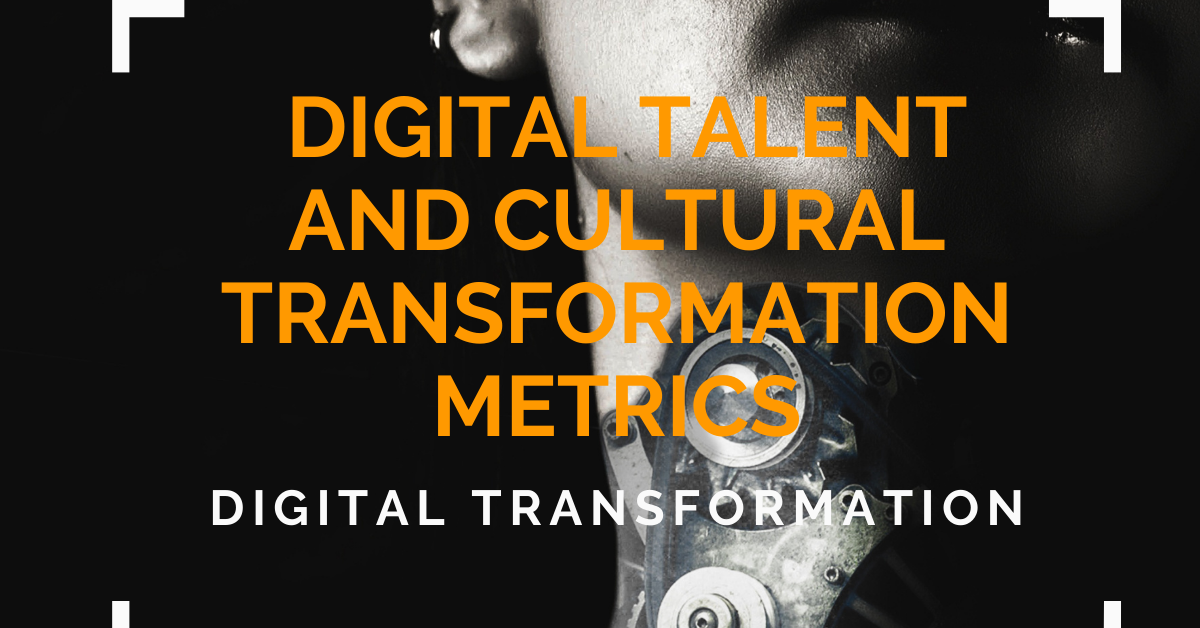30 ways to build a pipeline of processes suitable for Robotic Process Automation (RPA) and Intelligent Automation (IA) and make money
In our last article we looked at 8 questions organisations need to ask to ensure they select the right processes for intelligent automation. When you know what you are looking for, finding and selecting the correct processes to automate becomes a lot easier.
This articles gives you 30 ways to build a pipeline of processes suitable for redesign, robotic process automation (RPA) and/or intelligent automation (IA).
“An understanding of the business and the marketplace is as important as the technology. It is about the people and the process. One can never be fully successful focusing only on the tools in RPA.”
Hazal Beegan, Senior RPA Consultant
To establish an RPA | IA program organisations need to mine for ‘process gold’. The whole world runs on processes. Every customer experience and business outcome is the product of an invisible flow of data, interactions and actions between your systems and your people.
High value ROI processes are the pot of intelligent automation gold at the end of the rainbow. But they are not easy to find. This article looks at the best ways to find processes that can be automated, or redesigned, for Intelligent Automaton (IA).
Yet more often that not; it is company processes and people who hold IA programs back. An organisations RPA | IA program needs to inject itself into your enterprises process flow. An RPA | IA program can then help optimise each and every operational element for exceptional business outcomes, extraordinary customer (CX) and employee experiences (EX) and world-class digital business performance (DX).
1. Offer RPA | IA service for free. Early, well communicated wins, breed both Intelligent Automaton (IA) muscle and business confidence in an Intelligent Automaton (IA) program. However, in many of today’s global organisations IT press for business funds before helping business functions deliver their organisational goals.
IT or Centre Of Expertise (COE) teams that offer and advertise their central IA | RPA services for free can generate both excitement and ideas for RPA | IA. Processes that are brought forward can then be assessed against you organisations criteria (e.g. process suitability; strategic goals; financial, customer experience, staff experience, risk or compliance goals). Later on a COE can start cover its costs and become a profit centre as the value of intelligent automation lifts the financial performance of an organisation beyond its current analogue state.
“Early wins can build credibility – but remember people need to care about the wins! They also need to know about them, so share them!”
Paul Arnold, Head of Product and Development at Cortex Intelligent Automation
2. Complete a Level 3 Process Taxonomy Review and identify processes currently suited to, or redesign-able for, intelligent automation. Internal Lean teams or specialist Intelligent Automation consultancies, with the support of SMEs, can be readily employed to complete a rapid Level 5 taxonomy automation assessment, then complete a deeper Level 4 review process undertaken for those processes deemed most appropriate deemed appropriate. Having mapped your current processes a gap analysis can then be completed between best in class digital companies and a path to excellence set in place.
3. Review organisational charts and create heat-maps for potential opportunity areas to investigate. Areas of organisations where large numbers of employees work; or where volumes of staff complete similar tasks (e.g. finance analysts may be located centrally or distributed within business functions) can be ear marked for Intelligent Automation assessment.
4. Identify areas of complaint and/or high volumes of rework within your organisation (e.g. complaints from customers, audit, compliance, security or risk teams). A lack of clarity and consistency as processes are executed may lead to a multitude of different processing methods and therefore, outcomes. Standardising and intelligently automating processes will lead to more process consistency.
5. Create a character, bring out the inner child in people and use the character to advertise your RPA | IA program (e.g. a robot toy). The process and analyst industry have vacillated between RPA | IA programs begin the greatest thing since sliced bread or job killing programs. Individuals who are worried about their roles or fear technology in general may be more willing to engage in a fun manner than with a cold program executed without their involvement.
Some of the most successful RPA | IA programs to date have ran robot naming competitions and made a robot toy the face of their intelligent automation program. In doing so Intelligent Automation and RPA becomes less threatening or daunting. Order a Meccano robot (click here to see an example) off Amazon (or similar) and run a naming competition to make robots fun and engage people in learning more about bots.
Ensure winning your organisations winning entry has a human name. Scale enterprise success stories show that teams with ‘human named robots’ are more willingly to both engage with RPA | IA programs and incorporate them into their working lives. Introducing ‘Penny’ or ‘Sam’, your digital assistants to support remove the mundane and monotonous parts of your job is a lot more appealing than introducing ‘JobKiller1’ or ‘JobKiller2’ into your organisation.
6. Questionnaire or survey – A questionnaire or survey should be sent to all staff (or targeted segments) with a link to a shared portal or general RPA | IA idea intake system. Education will need to be provided to help individuals or teams understand the technology but videos, criteria selection work flows, support from business analysts may be provided in coordination with a campaign.
This may be a perfect opportunity to both educate the business on RPA AI IA and to eliminate process candidates that are not suitable for IA. It must be remembered that folks may deliberately NOT suggest processes if this program is communicated poorly or the organisation is undergoing restructure if business people believe robots are to replace their roles.
7. Simply ask people performing a task. Create a mechanism for employees to voice their suggestions about possible RPA | IA activities. Possible avenues include; drop in sessions, an intranet page, a survey, workshops, employee brainstorming sessions or workshops etc.
An RPA | IA team should go meet operational leaders to discuss and assess business challenges where RPA | IA may be suitable. Rapport can be built with teams, bad processes eliminated at the very start and excellent RPA | IA candidates expedited for development.
This is a people heavy approach but careful area or process targeting can help alleviate some of the burden associated with this approach.
“If your company is not mature in process management and lacks high quality data to identify potential use cases for automation, the best source for use cases are face-to-face meetings. Go to different business units and ask them where they spend the most hours, which processes generate the most money and where improvements would bring most customer satisfaction?”
Jani Rahja, Head of Intelligent Automation Posti Group Oyj
8. Process Improvement Teams. Educate and then work with your organisations continuous improvement, operational excellence or process excellence teams to identify opportunities for process improvement through intelligent automation
“Understand exactly where your organisation’s pain points lie. Then invest in an enterprise RPA | IA platform that not only takes away that pain but also adds exceptional employee and customer experiences too. An intelligent automation program that is implemented and executed correctly will see your organisation get its money back many times over.”
Gourav Datta, RPA and Intelligent Automation Delivery Lead
9. Engage Global Process Owners (GPOs) or Process Owners. Ask process owners to list the processes that are not performing well and that could benefit from automaton. Ask for high level employee performance metrics, a high level process map and process metrics for review. Don’t just focus on processes that are not working well, ask about high volume low volume processes that consume large quantities of team and work with the process owner to redesign the process(es) for digital freeing labour and cost that can then be employed on more value add work.
“It is incredibly important to ensure you’re solving the right problems. To do this, you MUST communicate with your process owners.”
William Roseberry, Owner of RoseberryPi LLC
10. RPA | IA Software Vendors or Consultants. During discussions with RPA | IA vendors ask them for a list of activities that they have identified as excellent RPA | IA candidates for intelligent automation or process redesign in other organisations. Consultants often find that there are few dissimilarities between differing organisations back office or front office functions and therefore lessons learned in one company are often applicable in another.
- Typical RPA Use Cases by Nandan Mullakara Strategic Advisor on Intelligent Automation | RPA | AI
- Deloitte Human Capital and Robotic Process Automation
- Bots, Algorithms and The Future of the Finance Function
11. Risk and Compliance Teams. Discuss which processes or teams process experience non-compliance or risk issues who could benefit from bots that execute processes the same way 100% of the time.
12. Training or Learning & Development Teams. Training or Learning & Development teams know business processes well. They document, diagram and train individuals on processes thus understand where logical, rules based flows exit.
13. Add RPA | IA education information to employee on-boarding / induction packs and add notes as to who to contact if they have an idea for RPA | IA that might help automate the mundane or routine tasks they come across in their new role.
14. Educate Senior Leadership Teams to the benefits of RPA | IA. Educate leadership teams on RPA | IA and demonstrate the benefits of RPA to their teams. Evidence how bots | AI can improve business results of SBUs (e.g. cost reduction, risk and compliance benefits, CX benefits, faster processing to hit SLAs sooner, etc.). Getting senior leadership team buy-in will encourage them and their teams to ‘pull’ the RPA | IA services on offer.
Demonstrate the speed to get RPA operational compared to other IT integrations to allow SBU leaders to leverage business benefits faster (e.g. hit business or customer targets sooner). Demonstrate how process redesign can make processes faster and simpler. Evidence how RPA | IA might improve service (e.g. OCR, Chatbots). Seek endorsements from your executive team.
Have your executive team evangelise and speak to the importance of your RPA | IA program. If your RPA /IA program is one of your organisations top 5 goals and your executive teams remuneration is tied to it then this will near guarantee your programs success (assuming you deliver on your promises of course!).
15. Get into your internal communications program and offer to write a piece on intelligent automation or Industry 4.0 or on other similar topics. This should be written in a way that is entertaining, inspirational or informative so as to attract interest in your RPA | IA program. Incorporate how your team might help.
16. Create a e-newsletter and regularly send to a emailing list to your key stakeholders, champions, etc. Publish any wins that you might have (e.g ideas for intelligent automation, new productions, new capabilities that others might benefit). Don’t assume people know what you are doing just because you do! Always remember to deliver your message from the point of how this might benefit the customer NOT from the perspective of how super the code is or how wonderful your team is. Get written endorsement or video quotes from your benefiting audiences and let them speak to how automation has helped them. This is more ‘real’ for teams as opposed to their listening to a technical team selling a concept in which they have a vested interest.
17. Publish content on Internal Websites. Add RPA | IA advertising banners on your internal website. Launch a multimedia rich RPA | IA website with a section that enables individuals to suggest processes that might be automated. Add RPA | IA news stories to intranet sites or sub-sites, such as Finance, IT, HR, risk to advertise your RPA | IA program as well as seek ideas for intelligent automation. Regularly review your internal site and keep it updated with new links and articles and ways of connecting to you and your team.
“Remember to actively manage communications and messaging so as to remove a fear ‘robots coming to steal your jobs’. Your best ideas for intelligent automation, and the individuals you need to work with to intelligently automate processes, are those individuals who currently reside within your organisation”.
Matthew Coffey, RPA Delivery Lead at Pearson
18. Dragons Den. Create a buzz around your RPA IA AI program and have teams present and compete as they might on Dragons den in front of executive or senior managers. Funding could be sought with a business case thought through and a dragon (read senior leader) appointed to help drive the initiative forward. Prizes could be offered for the IA initiatives brought forwards.
19. Lunch and Learns incorporating hands on experimentation labs. Setup non technical sessions for employees to meet new members of the virtual workforce. Offer free lunch and learn or Zoom sessions allowing people to drop in, see robots working, show how they are used and seek suggestions from them for bots. Develop a way for individuals to code simple bots to remove bot fear and identify individuals who might join RPA | IA pods and develop robots for their own areas benefit
20. Review corporate and customer feedback surveys to see where teams are struggling within the organisation and use your RPA | IA program can help.
21. Citizen Developers | RPA Champions. Find, train and nurture RPA | IA champions in each or your organisations SBU and have them support find need ideas for RPA | IA each month. Create a mechanism champions to present their teams ‘best automation’ ideas and present awards on a regular basis to those ideas which get developed.
22. Get featured in company town-halls. Lots of firms run global town-hall sessions. Have your RPA | IA introduced at a global town hall and use that time to educate and seek ideas for IA.
23. Complete a POV. Use a mobile phone to video your results and record the voice of the person who you helped. Then use that video wherever and whenever you can to introduce and advertise your RPA | IA program within your organisation. It is ideal if your CEO does this at a town-hall, strategy session, as a organisation wide broadcast email or posting to your organisations internal or external website. When you CEO speaks, people will listen.
24. Value stream analysis. Mapping existing processes and workflow challenges; then assess their suitability for process redesign and/or intelligent automation.
25. Create a stakeholder map then target key stakeholders who maybe interested in learning about, and benefiting from, an RPA | IA program.
26. Enter an award, win it and then tell the business you won it. Sometimes it takes external recognition to get internal recognition for you program or idea. Use this success to drive awareness and success within your organisation.
27. Go to the GEMBA and listen to the problems people have; observe, engage and improve the process (not the people).
28. Use Process Discovery tools to automate the process of finding the pipeline candidates suitable for Robotic Process Automation (RPA) and Intelligent Automation.
“Process Discovery tools tools use machine learning techniques to identify manual and repetitive business processes. These algorithms learn to automate work by continuously observing clicks and keystrokes and identifying repetition within this dataset. Once a process is understood, the code for process automation is automatically generated broadening the automation potential within a business. Furthermore, Robotic Process Automation (RPA) developer can use these generated processes and enhance them with error handling scenarios. These methods reduce automation development time by up to 80%.”
Ambuj Agrawal, CEO ZappyAI
29. Take individuals from the business into your RPA | IA program for 12 months or more. Then train them and send them back into their SBUs where they can either help those areas automate processes or suggest ideas for intelligent automation to a crental team who can then take their ideas forward.
30. Make RPA and IA a key part of everyone’s’ annual goals and KPIs so they are actively and financially encouraged to bring forward ideas for intelligent automation.
“RPA is a business tool and not an IT solution; every person in the business should have an intelligent automation goal if an organisation is to transform.”
Gourav Datta, RPA and Intelligent Automation Delivery Lead
Keeping your program front and centre of mind over time takes dedication and hard work. It is imperative you NEVER stop building a pipeline of processes to intelligently automate. Setting up an communications calendar within your team with set reminders and production schedules is key. When this becomes a habit you are more likely to see an enduring pipeline of candidates coming into your program.
How do you develop a continuous pipeline of processes for RPA and IA?
Useful links:
- 14 rules for Robotic Process Automation (RPA) and Intelligent Automation (AI) success
- Deloitte Human Capital and Robotic Process Automation
- Bots, Algorithms and The Future of the Finance Function
- Behaviours of an Agile Developer
- Behavioural traits of an Agile Developer
- If you are not willing to go all in, then don’t put on your RPA swimsuit.
- The biggest lie told to RPA customers – 50 robots equals success
- 40 essential selection criteria to choose an RPA platform
- Making the Connections: Using Internal Communication to Turn Strategy Into Action’ by Bill Quirke
- Internal Communications: A Manual For Practitioners’ by Liam FitzPatrick and Klavs Valskov
If this could benefit someone else tag them and share this.
Free to reuse: We are a community of RPA and Intelligent Automation experts with years of real world experience. We have stories to tell and the scars to show for it. We share our collective wisdom for free to simply provide as much value as we can to you. Therefore, if you want to post this article on your LinkedIn page then please feel free to do so. The more information we share within the RPA community the more likely businesses are to succeed with this excellent technology.
Further Help: If I can help you in any way please do reach out.
Note: The views expressed above are my views and not those of my employer or the employers of the contributors.










Leave a Reply